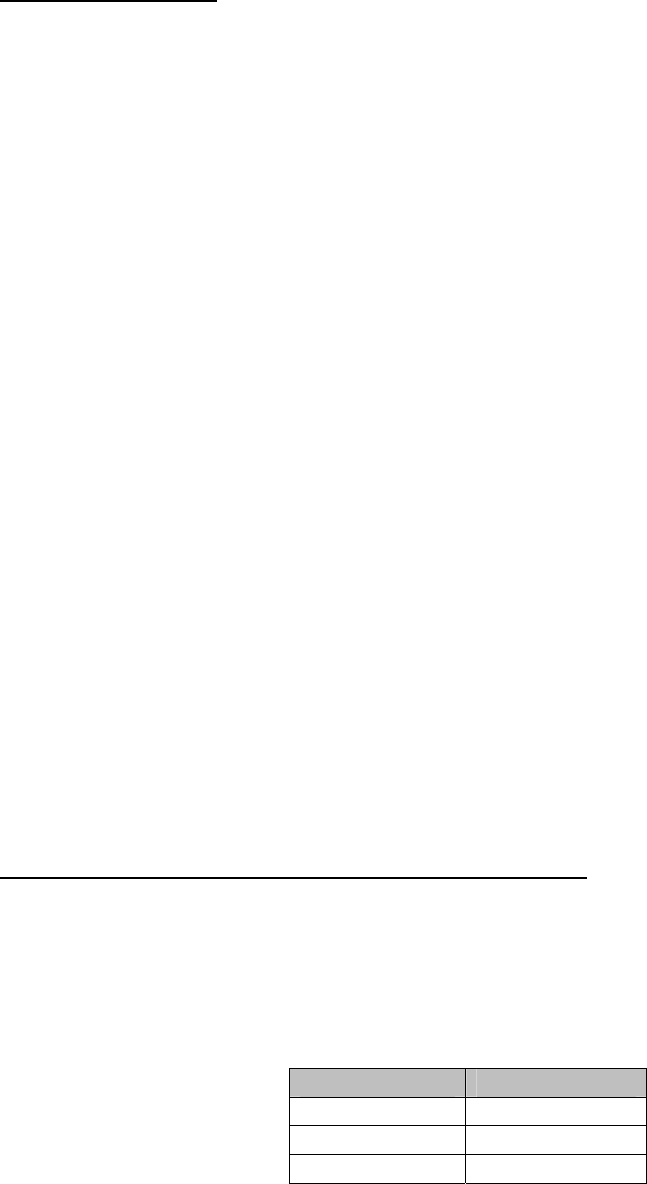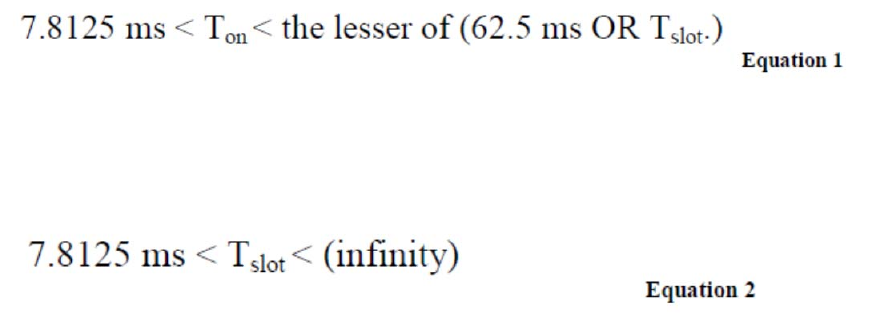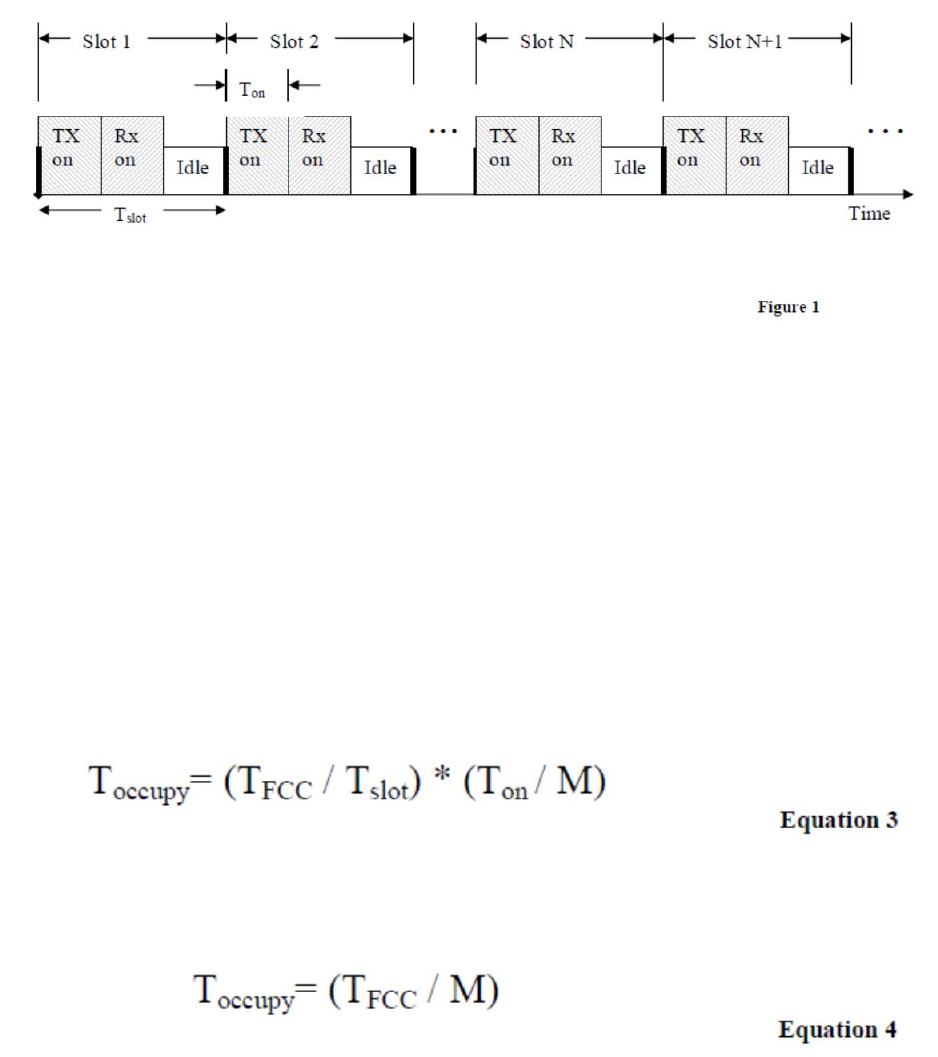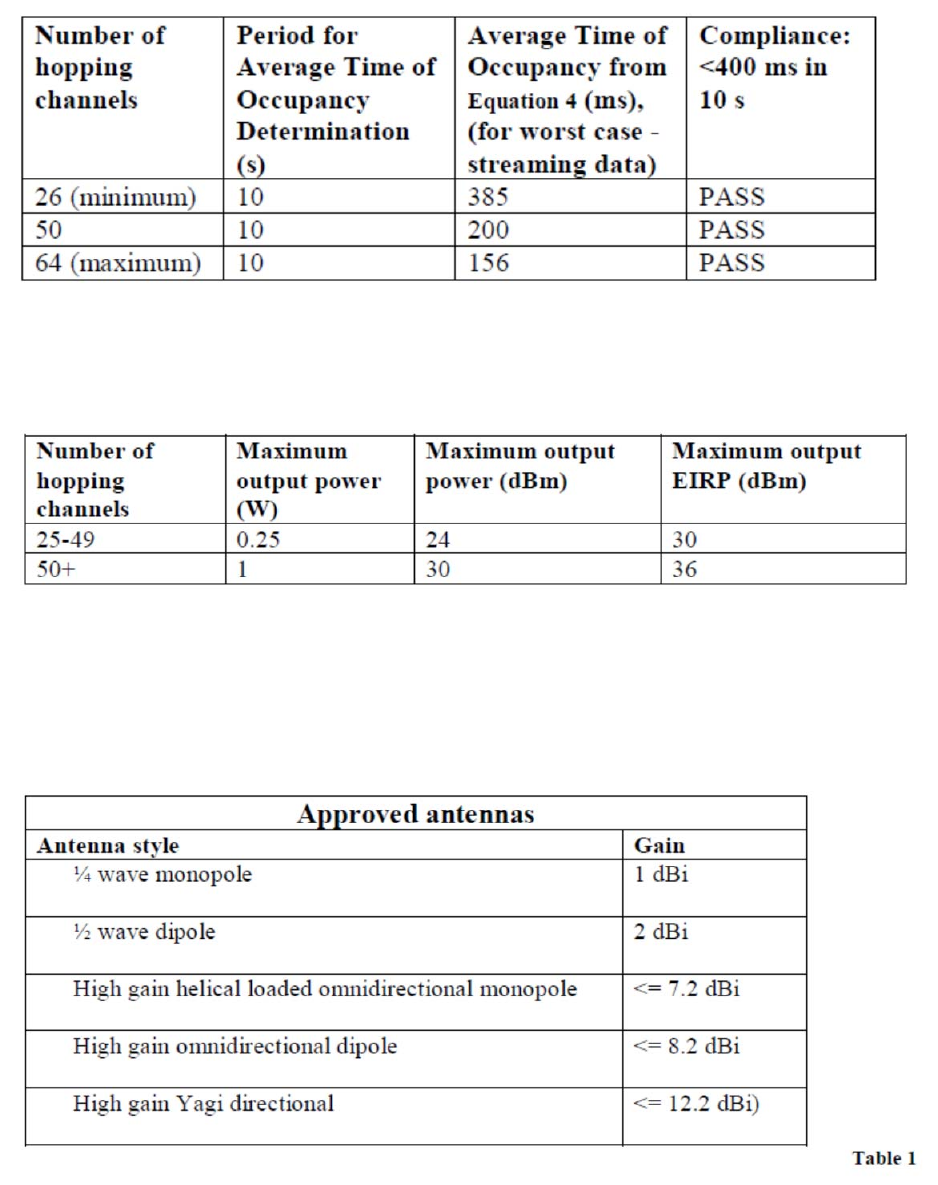Banner Engineering RM7023 Banner RM7023 Transceiver User Manual Users manual
Banner Engineering Corporation Banner RM7023 Transceiver Users manual
Users manual

BannerEngineeringRFModuleImplementationGuide
Purpose:Thisguideisintendedasaninternalguidancedocumenttoensurethattheradiomodule
identifiedisinstalledinBannerEngineeringequipmentinanappropriatemannersoastocomplywith
theconditionsoftheoriginalFCCgrantandICcertificate.
Applicability:RFmoduleFCCID.:UE3RM7023,IC: 7044A‐RM7023
Antennas:Themodulewascertifiedwiththefollowingantennas.Theseantennasorantennasofthe
samedesignbutlowergainmaybeusedinthefinalinstallation.
Gain dBi Type
7.2 Dipole
Monopole
12.2 Yagi
Antennaconnection:Therfmodulehasanon‐standardantennaconnectionsuchasareversegender
connector.Theequipmentmustbeprofessionallyinstalled.
Finalassemblylabeling:Thefinalassemblymustcontainalabelnotifyingtheuserthatthedevice
containsacertifiedrfmodulethatisidentifiedbythefollowingproductapprovalnumbers:
FCCID.:UE3RM7023
IC:7044A‐RM7023
HumanexposuretoRadioFrequency(RF)energy:Themodulereferencedinthisdocumentwas
evaluatedtodeterminecompliancewithANSIC.95(USA)andSafetyCode6(Canada).Thismodulecan
onlybeusedinfinalassembliesthatareusedinamobileenvironmentwheretheradiatingelementis
locatedaminimumof20cm.fromtheuserornearbypersons.Thismodulemustnotbeusedinafinal
productthatisusedinanenvironmentwheretheradiatedelementmaybeexpectedtobecloserthan
23cm.fromtheuserornearbypersons.Professionalinstallationisrequired.
Unintentionalemissionrequirements:Thefinalproductmustbetestedforunintentionalemissionsin
accordancewiththefollowingregulations.
USA–CFR47,Part15,SubpartB
Canada–ICES‐003,Issue4
Modification:Therfmodulereferencedinthisdocumentmustnotbemodifiedinanmanner.
FinalProductUserGuideStatements:Theuserguideforthefinalproductmusthavethefollowing
statementstoinformtheuserofproperoperationandimplementationoftheproduct.

FCCspecificstatements:
ThisequipmenthasbeentestedandfoundtocomplywiththelimitsforaClassBdigitaldevice,
pursuanttoPart15oftheFCCRules.Theselimitsaredesignedtoprovidereasonableprotection
againstharmfulinterferenceinaresidentialinstallation.Thisequipmentgenerates,usesand
canradiateradiofrequencyenergyand,ifnotinstalledandusedinaccordancewiththe
instructions,maycauseharmfulinterferencetoradiocommunications.However,thereisno
guaranteethatinterferencewillnotoccurinaparticularinstallation.Ifthisequipmentdoes
causeharmfulinterferencetoradioortelevisionreception,whichcanbedeterminedbyturning
theequipmentoffandon,theuserisencouragedtotrytocorrecttheinterferencebyoneof
thefollowingmeasures:
Reorientorrelocatethereceivingantenna.
Increasetheseparationbetweentheequipmentandreceiver.
Connecttheequipmentintoanoutletonacircuitdifferentfromthattowhichthereceiver
isconnected.
Consultthedealeroranexperiencedradio/TVtechnicianforhelp.
FCCCaution:Anychangesormodificationsnotexpresslyapprovedbythepartyresponsiblefor
compliancecouldvoidtheuser’sauthoritytooperatethisequipment.
ThisdevicecomplieswithPart15oftheFCCRules.Operationissubjecttothefollowingtwo
conditions:(1)Thisdevicemaynotcauseharmfulinterference,and(2)thisdevicemustaccept
anyinterferencereceived,includinginterferencethatmaycauseundesiredoperation.
RFExposurewarning:Thisdevicemustbeoperatedwithamaximumeirpof4wattsanda
minimumseparationdistanceof23cmbetweentheradiatingelementsandtheuserornearby
persons.
IndustryCanadaspecificstatements(inbothEnglishandFrench):
Thisdevicehasbeendesignedtooperatewiththeantennaslistedbelow,andhavinga
maximumgainof12.2dBi.Antennasnotincludedinthislistorhavingagaingreaterthan12.2
dBiarestrictlyprohibitedforusewiththisdevice.Therequiredantennaimpedanceis50ohms.
Gain dBi Type
7.2 Dipole
8.2 Monopole
12.2 Yagi

Toreducepotentialradiointerferencetootherusers,theantennatypeanditsgainshouldbeso
chosenthattheequivalentisotropicallyradiatedpower(e.i.r.p.)isnotmorethanthatpermitted
forsuccessfulcommunication.
ThisdevicecomplieswithIndustryCanadalicence‐exemptRSSstandard(s).Operationissubject
tothefollowingtwoconditions:(1)thisdevicemaynotcauseinterference,and(2)thisdevice
mustacceptanyinterference,includinginterferencethatmaycauseundesiredoperationofthe
device.
RFExposurewarning:Thisdevicemustbeoperatedwithaminimumseparationdistanceof23
cmbetweentheradiatingelementsandtheuserornearbypersons.
Cetappareilaétéconçupourfonctionneraveclesantennesénuméréescidessous,etayantungain
maximalde12.2dBi.Lesantennesnonincluesdanscettelisteouayantungainsupérieurà12.2dBisont
strictementinterditespouruneutilisationaveccetappareil.L'impédanced'antennerequiseestde50
ohms.
Gain dBi Type
7.2 Dipole
8.2 Monopole
12.2 Yagi
Pourréduirelerisqued'interférenceavecd’autresutilisateurs,letyped'antenneainsiquesongain
doiventêtrechoisisafinquelapuissanceisotroperayonnéeéquivalente(p.i.r.e.)nedépassepas
l'intensiténécessaireàl'établissementd'unecommunicationsatisfaisante.
Cetappareilestconformelanormed'IndustrieCanadaexemptsdelicenceRSS(s).Sonfonctionnement
estsousréservedesdeuxconditionssuivantes:(1)cetappareilnedoitcauseraucuneinterférence,et
(2)cetappareildoitpouvoiracceptertouteinterférencereçue,ycomprisuneinterferencepouvant
causeruneopérationindésirable
Avertissementd'expositionauxfréquencesradio(RF):Cetappareildoitêtreutiliséavecunedistancede
séparationminimalede23cmentrelesélémentsrayonnantsetl'utilisateuroupersonnesproches.

Overview
The Banner RM7023 device is a frequency hopping spread spectrum transceiver operating in the
902 – 928 MHz band. When mounted to a carrier board containing a microcontroller and voltage
regulator, the pair is known as the DX180.
The DX180 employs a time-slotted architecture to support point to point, point to multipoint,
peer to peer and TDMA network topologies. Some operational parameters (number of hop table
frequencies, power levels, TDMA “slot times”) are configurable at the system level to provide
maximum flexibility for particular applications and network topologies, but for a given
architecture the parameters will not change in the field. This document will discuss fixed and
configurable parameters and their relation to meeting the FCC specifications. Such parameters
include the frequency plan, the time sharing architecture, power control, and approved antennas.
Also discussed will be the partitioning of radio functions as pertaining to the limited Modular
Approval for the device.
Frequency Plan
The radio is capable of transmitting or receiving on any of 64 equally spaced, non-overlapping
channels available in the 902-928 MHz band. (902.4, 902.8…927.6 MHz) From this set of 64, a
subset of M (M <= 64) unique frequencies will be chosen to populate the hop table. The subset
of M frequencies will be configured at the factory and will not be field adjustable. The radio
hops through each successive entry in the hop table in pseudorandom order and then repeats,
never truncating the list and starting over. The receiver is a direct conversion type (zero-IF)
meaning there are no additional intermediate frequency oscillators.
TDMA Plan
The radio is intended for operation in deterministic and ad-hoc networks. The communications
channel is shared in these networks using a time domain multiple access protocol. The
underlying structure to this protocol is a frame made up of N time slots, each of length T
slot
.
During each time slot, a given radio could spend part of its time transmitting (T
on
), receiving, or
idle to conserve energy. For this system, the time spent transmitting per time slot, T
on
, is limited
in software to be between 7.8125 ms and 62.5 ms. Obviously, if the Time Slot Duration T
slot
is
less than 62.5 ms, then that would be the maximum on-time per slot (by definition a transmission
can not occupy more than 100% of T
slot
.) The relationship between T
slot
, T
on
and transmit and
receiving is illustrated graphically in Figure 1, below.
The actual duration of the slot (T
slot
) is not explicitly constrained, but is governed by practical
limitations. At minimum, T
slot
must be long enough for the radio circuitry to stabilize on a given
channel. At maximum, Tslot must be short enough to allow networks to form and communicate
expediently. From
Equation 1
, it can be seen that T
slot
in this system will always be greater than
7.8125 ms.

Average time of occupancy
Under no circumstances will this scheme result in violation of the FCC maximum for average
time of occupancy on a given channel. The period of interest for the FCC is 10 seconds. Average
time of occupancy on a channel may be calculated as follows.
1. Let T
FCC
be the period of interest for the FCC rules. (T
FCC
= 10 seconds.)
2. Calculate the # of hops, N
hops
, of the hop table in the period of interest. N
hops
= T
FCC
/ T
slot
3. Divide the number of hops through the table, N
hops
, by the number of unique frequencies in the
hop table (M), to find the average number of hops on a given channel. N
onechannel
= N
hops
/ M.
4. Multiply the number of hops on a given channel by the transmitter ON time, T
on
, to find the
average Time of Occupancy (T
occupy
)on a given channel in the period of interest. T
occupy
=
N
onechannel
* T
on
Taken together,
In the limiting case of streaming data T
on
= T
slot,
the terms cancel, and
Equation 3
reduces
to
To meet the requirements of section 15.247 (a)(1)(i) off the FCC requirements, it is required that
systems in the band 902-928 MHz with bandwidths >= 250 kHz shall not occupy a given
channel any more than an average of 0.4 seconds in a 10 second window.
In the table below, the Average Time of Occupancy is calculated for representative numbers of
channels. For the DX180 system, the minimum number of channels is 26 (lower numbers of
channels being worst case for Average Time of Occupancy), and the maximum available pool of
channels is 64.

Output power control
For output power regulation as described in 15.247(b)(2), permitted output power
vs. hopping channels is as follows:
The control firmware limits output power to less than 24 dBm when utilizing less than 50
channels, and less than 30 dBm when utilizing 51-64 channels.
Antenna Choices
The following classes of antennas (
Table 1
) were tested and approved for use with the RM7023.
The device is always professionally installed and uses unique connectors. Installation
instructions dictate that power must be attenuated with some antenna choices to comply with the
EIRP limit of 36 dBm (4 Watts).
Statement of End Product Control
Banner will control end products in two primary ways. The first way is through the business
model: the RM7023 will not be for sale on the open market. The business model that the
RM7023 will be produced under is one of reusing the RM7023 across multiple versions of
Banner’s own internal products, or with close co-development efforts with trusted Banner
partners, which could culminate in Banner-manufactured devices being sold under another
brand. The second way that control will be maintained is more practical. The partitioning of
functions on the RM7023 and its carrier board keeps all the important intellectual property in the
microcontroller on the carrier board.
And because the profitability of the RM7023 doesn’t lie in licensing the manufacturing of the
modules, but rather in the IP that makes it a useful, networkable radio, it is safe to assume that
Banner will always retain control of the host systems. In summary, Banner has strong regulatory,
operational, and fiscal reasons for maintaining control over the products that the RM7023
appears in. Full compliance of the end products will always be ensured.